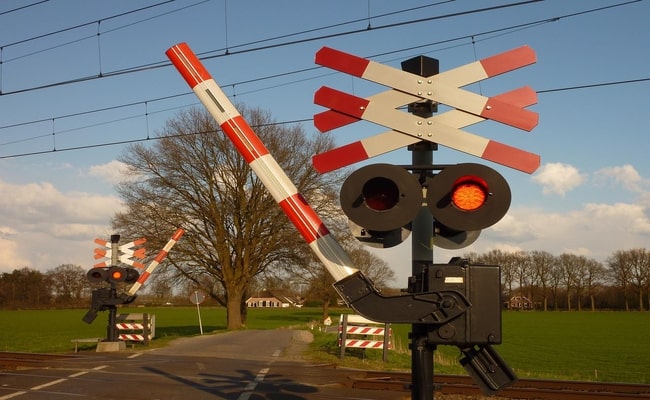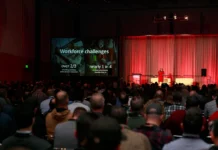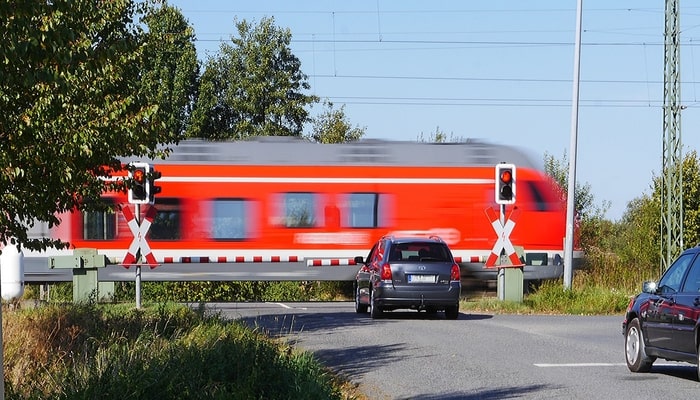You may be wondering if you have enough of these lights to make sure you are properly protected from trains. First, consider how to keep your light alignment correct. Then, check for warning signs, signals, and safety gates. After all, a good safety system will keep your community safe from accidents. After all, there are more important things to do than worry about a train coming!!
Warning signs
In addition to the standard traffic signs, you can find various warning devices at railroad crossings. Advance warning signs, a yellow background with a black X in the center and R on either side, alert motorists to slow down and listen for trains. The no train horn signs, on the other hand, are yellow with black letters and state “No Train Horn.”
These signs warn motorists to obey the quiet zone and to avoid obstructing traffic. Many countries use a sign to warn of multiple tracks, and this is mounted beneath the crossbuck or warning light assembly. Many European countries have several crossbucks on their warning signs, and Taiwan has half-crossbucks at railroad crossings.
Many other countries include crossbuck iconography on their warning signs. However, these are just a few examples of how warning signs are used today. In most cases, they are sufficient to warn motorists of trains approaching. In addition to warning signs, railroads often use advanced flashers that remain active until the actual crossing devices are deactivated.
This is important for public safety, as a failed advance device may prevent a driver from being alert to the controls. Some agencies, however, use passive “Railroad Signal Ahead” signs. The positioning of these warning signs depends on the speed of traffic and the geometric conditions of the roadway. The American Railway Engineering and Maintenance-of-Way Association has set a standard that every crossing must abide by.
Signals
You can safely cross a railroad crossing when you know what the signals are supposed to do. These signals work by using a DC circuit backed by large batteries. The circuits are separate for each track, and each one has three circuits.
The circuits on these crossing lights are separated by metal train wheels. As a result, the current can flow from one track to the next. If you are unsure of what the signals are supposed to do, use the information above to determine if they are functioning properly. One of the most important features of these lights is their ability to notify other road users.

Trains cannot stop instantly, so they must know when they must stop. A yellow signal, for example, is used to notify the train engineer that they should be prepared for the next signal. This is particularly useful in areas where there are no street lights or other obstructions.
However, it can also be used for situations where you are unsure what the signs mean or how they are going to be implemented. If you are new to railroading, you may be confused by the names of the signals. The word “approach” indicates that you are approaching a stop signal. It is therefore appropriate to call them “MAXIMUM APPROACH STOP.”
Safety gates
When the warning lights are activated, drivers are required to stop within fifty feet of the railroad crossing. The minimum distance to stop is different in each state. Drivers must also stop if a flagger is warning of an approaching train or if they can hear it and see it. A safety gate may also be lower than the warning light, signaling a lengthy time before the train arrives.
Motorists should never attempt to drive around a closed safety gate. The length and position of safety gates at railroad crossing lights depends on the type of railroad. Gates may be constructed of aluminum, wood, or fiberglass. They may not contain a breakaway feature.
However, some railroads may request reconfiguration of a railroad crossing in order to install safety gates. Gate assemblies may need to be placed in the median to cover the approach highway, which may require a crash cushion. Signals should never be placed in an unprotected painted median. The FRA recognizes four-quadrant gates as supplemental safety measures. Those with vehicle presence detection may be able to raise their gates.
However, varying intersection configurations may require gates to open and close at different times. Using gates at these lights is a common way to improve safety. The following information can help you decide if safety gates are appropriate for your area. Once you have decided to install them, make sure they fit the specific requirements of your location.
Excessive warning time
A railway crossing with an excessive warning time is a major cause of collisions because motorists may ignore the warning signal and proceed across the tracks. Although railroad crossings require a minimum warning time of 20 seconds, the warning time of other types of crossings may be longer or shorter than the recommended period. This is due to the fact that high-speed passenger trains can activate flashing-light signals.
Excessive warning times at railroad crossings should be adjusted as needed, and it is important to consider how the signal system works when selecting an active device. An excessive warning time at a railroad crossing is usually caused by changes in the train’s speed. The calculation is based on the train’s instantaneous speed as it enters the crossing circuit.
However, changes in the train’s speed can affect the calculated warning time and therefore the elapsed warning time. These changes should be considered when installing a railroad, also called level crossing with a signal connected to a highway. When active and passive railroad crossing control devices are used in conjunction, the advance flashers must operate after the active crossing devices have deactivated.
Failure to activate the advance device could lead to increased violations of the lowered gates by motorists. Some agencies use a passive “Railroad Signal Ahead” sign in addition to the warning devices. The location of this sign depends on the speed and geometrical conditions of the road.




























